SkunkWorks in the Trenches: America’s Experimental Helmets of World War I
May 10th, 2022
10 minute read
When the United States declared war on Germany in April 1917 and entered the First World War, it was woefully unprepared for the horrors that lay ahead. The conflict, which had devolved into a bloody stalemate, had seen the development of much new military technology. Tanks and airplanes had been employed to turn the tide, while horrific new tactics that involved poison gas and even tunneling under the trenches to blow up the enemy were introduced.
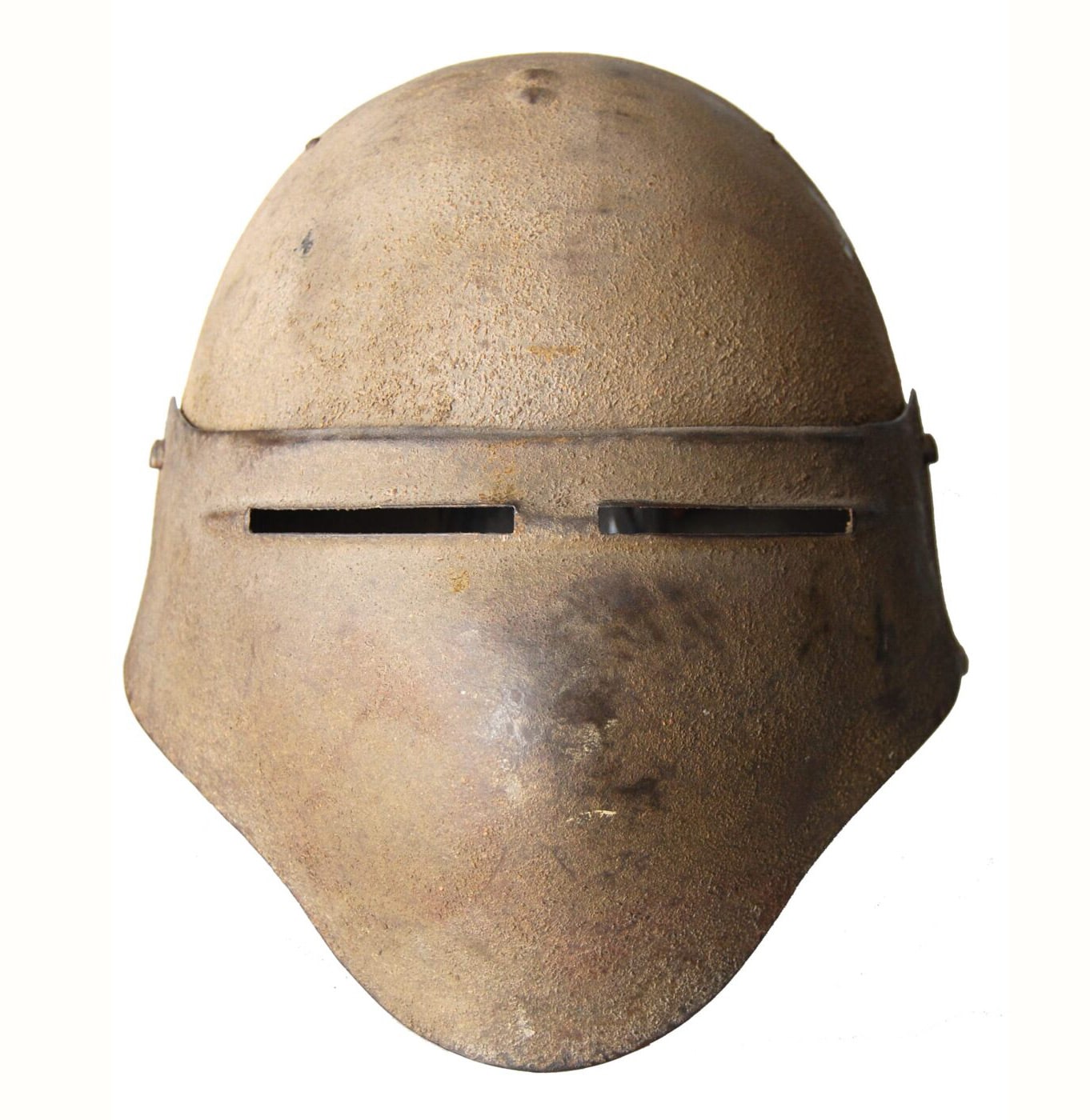
Millions were already dead by the time America joined the fray. It was truly a different conflict than what had begun in August 1914. The colorful French uniforms that included red trousers and the German spiked helmets (pickelhaube) had given way to muted colors and steel helmets.
While the United States military was equipped with the then-modern Model 1903 Springfield rifle, it lagged behind when it came to machine guns — and in the early stages of the American involvement, Doughboys were equipped with the French Chauchat.
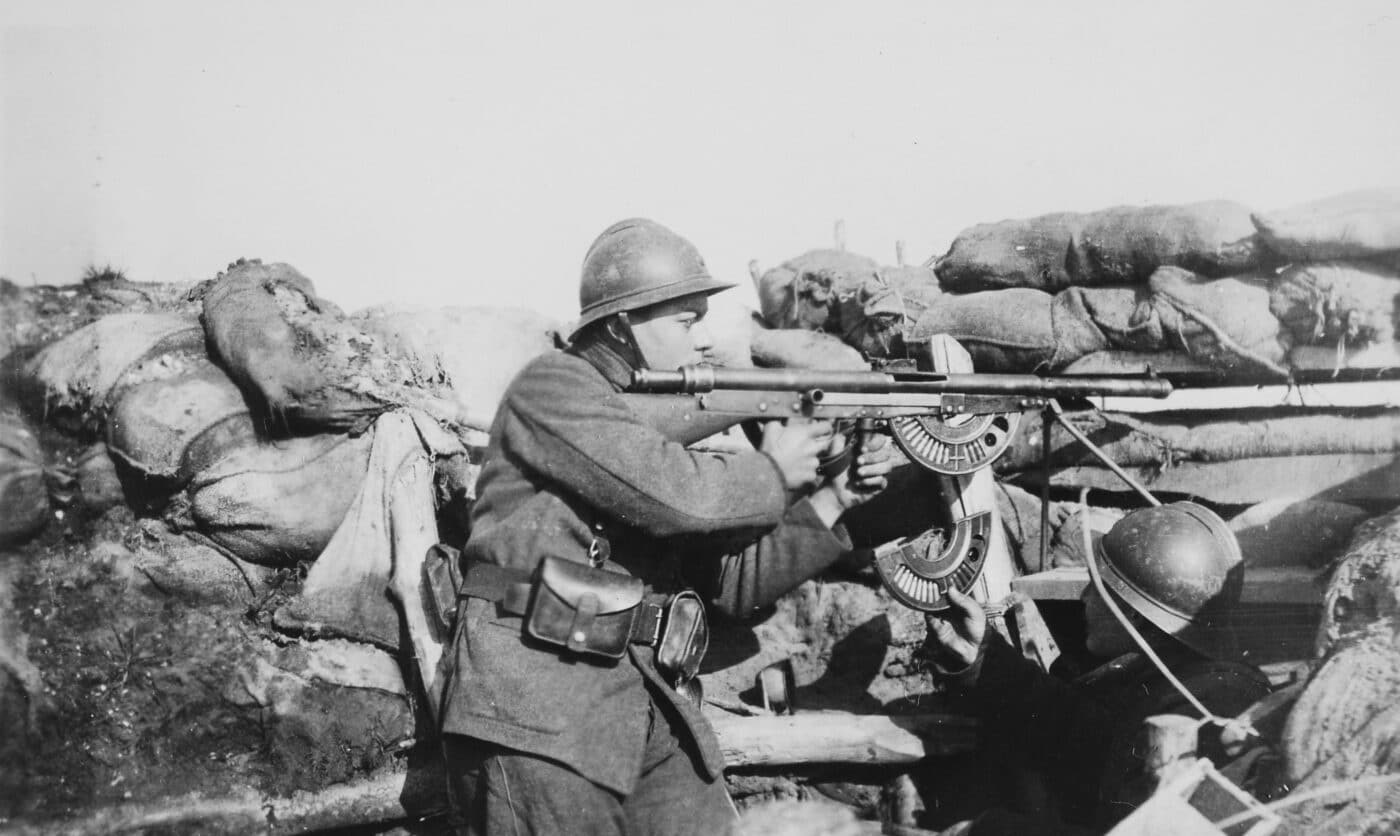
Meanwhile, most U.S. soldiers were issued a helmet that wasn’t really all that different from the British MkI “Tin Hat,” which had been introduced in the early months of 1916. The United States would continue to wear the basic helmet — albeit with an updated liner — until 1940.
Yet, largely forgotten is the fact that the United States had sought to develop its own helmet. Several models were actually considered, and that is where the name Dr. Bashford Dean typically enters the story. While his work in WWI American helmet development was significant, Dean’s greatest contribution to the world of helmet collecting actually was his book, Helmets and Body Armor in Modern Warfare, which was first published just after his death by the Yale University Press. That book has been the premier reference for helmets of the early 20th century, but it has also served to perpetrate the myth of Dean.
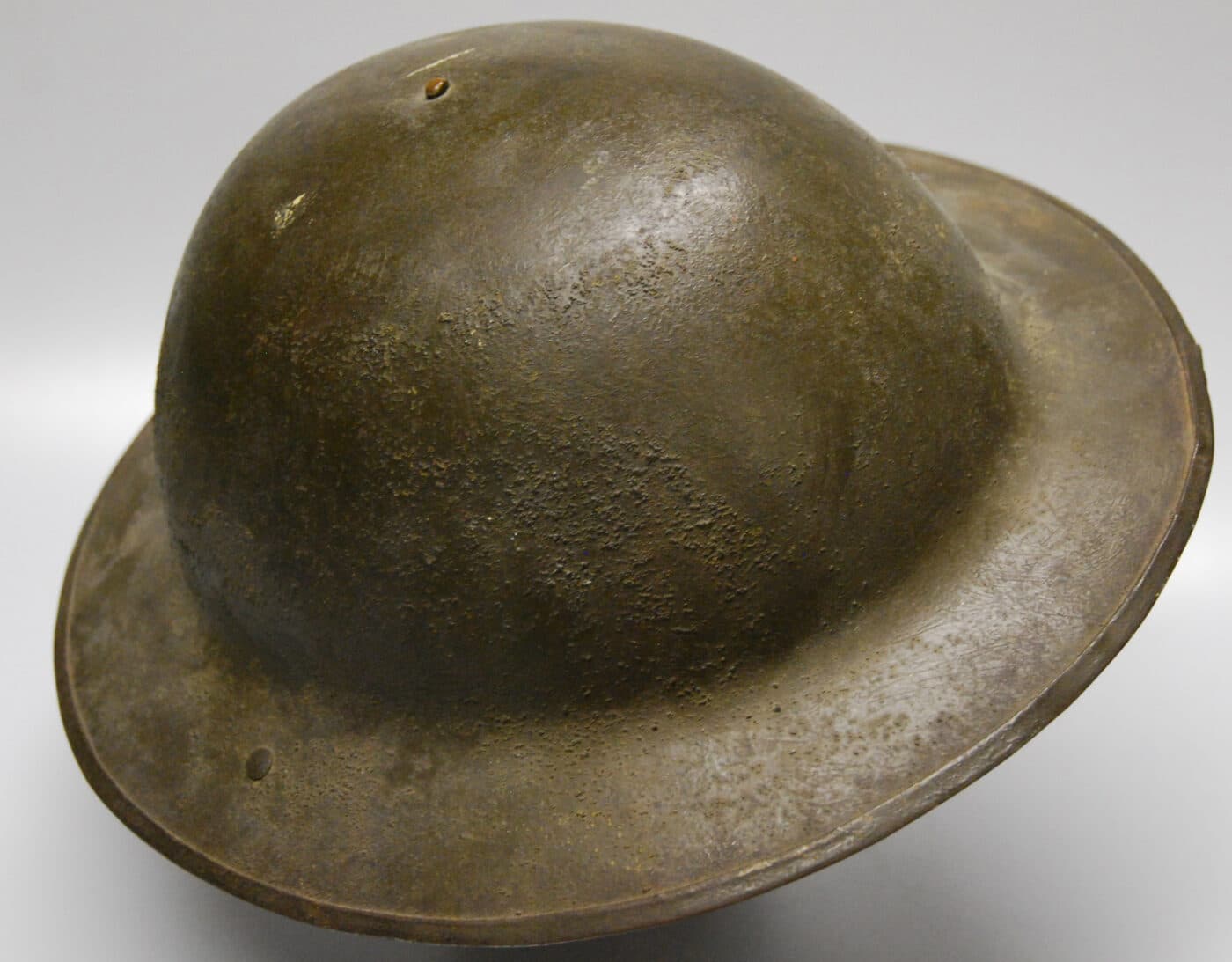
While it is true that Dean played an important role in the development of various experimental helmets, Dean was not the only individual involved in the effort to develop a superior helmet.
“The French had an active experimental helmet program during the First World War, and they had some half dozen models, even as they stuck with the Model 1915 ‘Adrian’ helmet,” explained advanced helmet collector Ian Henry, author of a forthcoming book on U.S. experimental helmets of the era.
“What we know about Dean is that he was quite enthusiastic about designing a U.S. helmet, and that came from his interest in armor,” added Henry.
The Museum Curator
Born in 1867, Dean could be described as quite the character. He was an American zoologist and armor expert and served on the board at both the New York Natural History Museum and the Metropolitan Museum of Art.
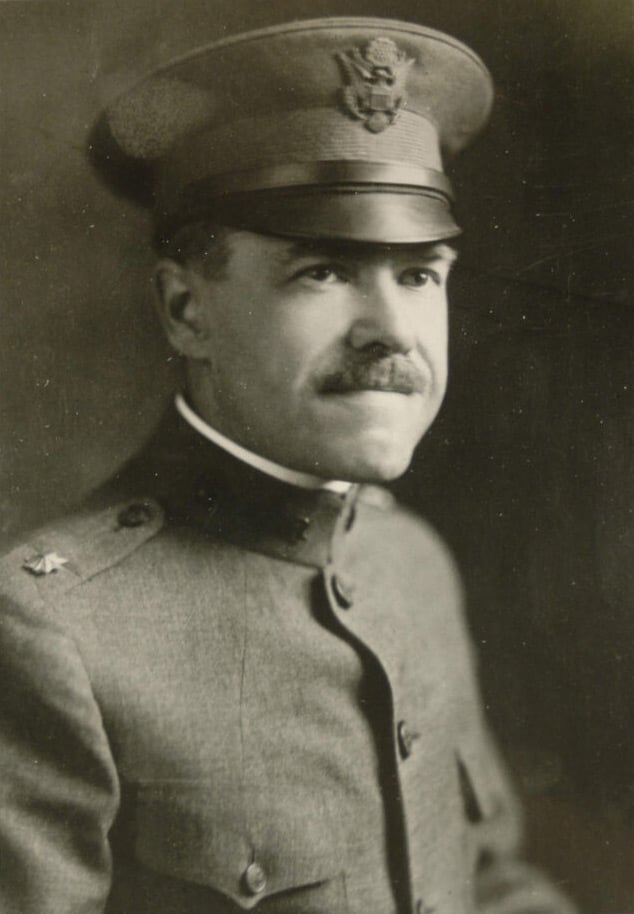
As a graduate of the College of New York City, Dean earned his Ph.D. at Columbia University, where he taught zoology. He also traveled extensively and became a noted authority on the subject of medieval arms and armor, and later served as the curator at the Met, where he was instrumental in establishing the arms and armor collection in 1912.
Dean oversaw the rapid growth of the museum’s collection, and through his world travels acquired many impressive items, notably the largest collection of Japanese armor outside of Asia. While frowned upon today, Dean also acquired many of the “second best” items for his personal collection, and in doing so he is reported to have inspired a generation of American collectors. Many of those would later make generous donations to the museum. When Dr. Dean died in 1928, he left his own collection of more than one thousand pieces to the Met, where the gallery is now named in his honor.
At the same time, however, Dean’s book is misleading in the role he may have played in the U.S. Army’s helmet development efforts. The traditional story is that he was approached by the military. Henry said that isn’t quite right.
“Dean may have weaseled his way into the program, and it appears he wrote letters to the Ordnance Department touting his experience with armor and medieval helmets,” explained Henry. “Dean was given a commission, and made a major in the Ordnance Corp.”
During the war, the Metropolitan Museum of Art placed its Arms and Armor Department at the disposal of the war effort. Dean, along with other scientists, metallurgists and designers, began to look at the helmets currently in use by England, France, Belgium and even captured helmets from Germany.
“Many of the designs began as plaster of Paris, and then into sheet metal prototypes,” said Henry. That fact explains why some of the models are little more than design drafts while others reached the production stage.
WWI Experimental Helmets
Missing from the full list of helmets developed during the First World War is the “Model 1,” but it has been assumed that the British MkI, which was adopted as the Model 1917 and produced in the United States, could be considered the first helmet.
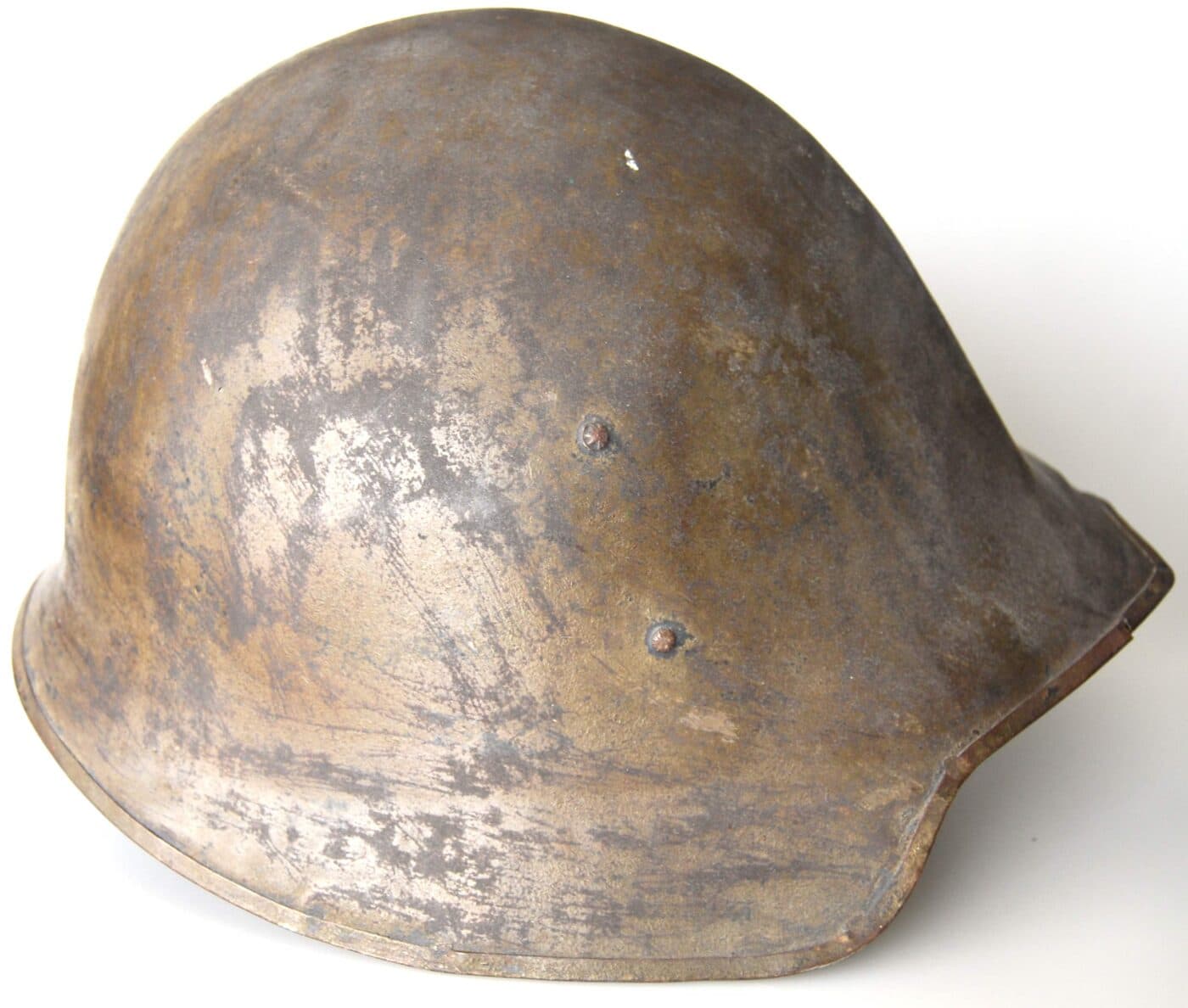
Thus, the first known American “experimental helmet” is the Model 2 — which was said to be based on the “Standard” helmets worn in Greece and Italy in the 15th century. Around 2,000 of those helmets were produced by the Ford Motor Company of Detroit, Michigan. It was considered too close in profile to the German Model 1916 helmet, and therefore rejected.
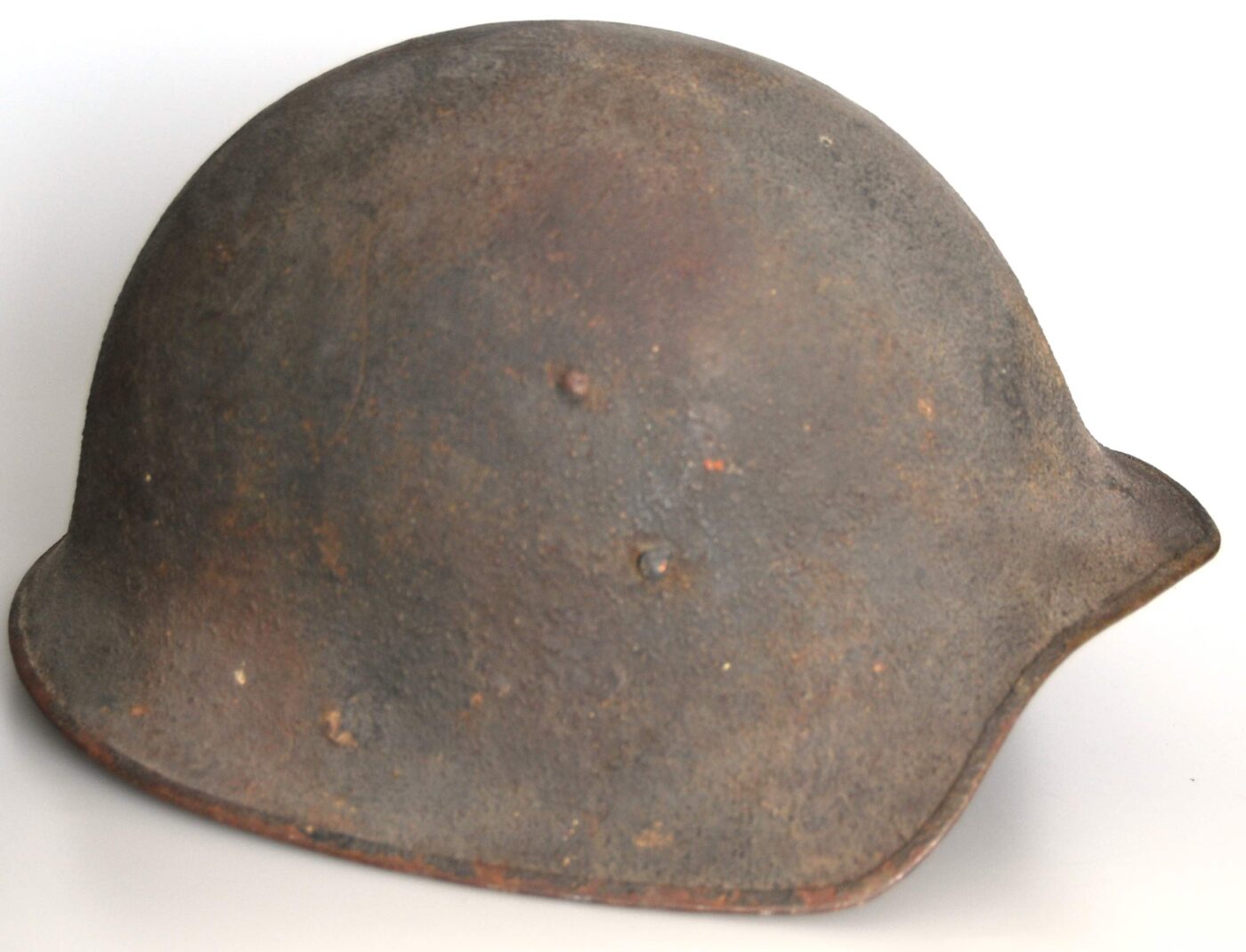
No mention in Dean’s books or records of the era is made of a Model 3, but author/collector Chris Armold in his book Steel Pots suggested it may have been one of so many one-offs. Likewise, the Model 4, which was designed by armor expert Daniel Tachaux of the Metropolitan Museum of Art, was only produced in small numbers. It was similar to the MkI but with a deeper bowl covering the wearer’s head. The only known surviving example was housed at the now defunct U.S. Army Ordnance Museum at the Aberdeen Proving Grounds, and is believed to still be in storage.
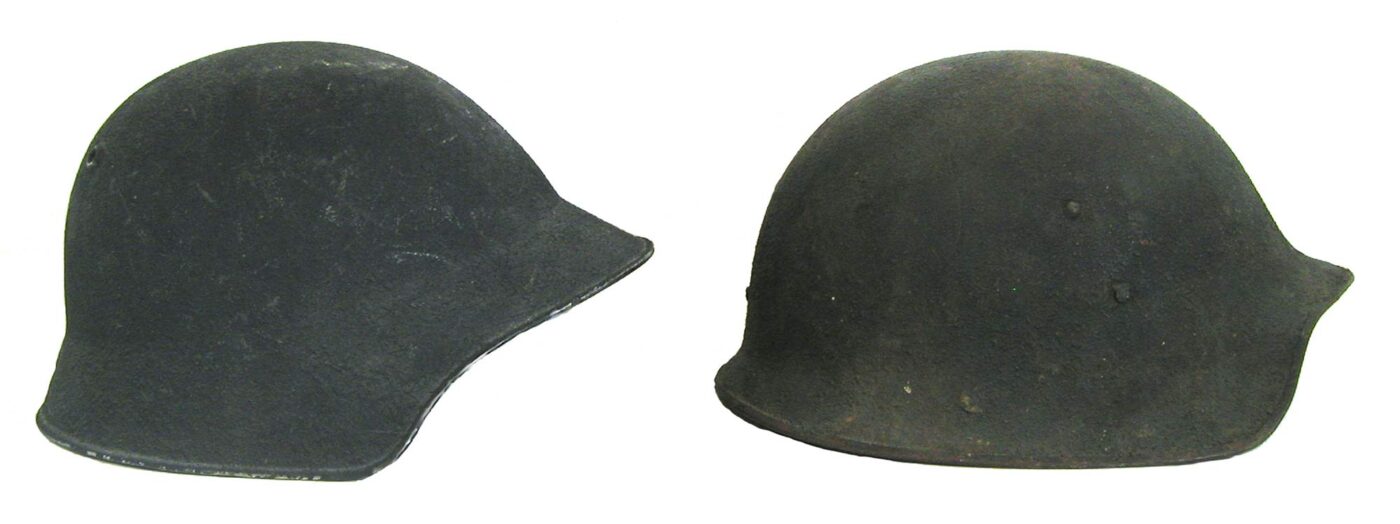
The Model 5 experimental helmet was similar in shape to the Model 2, and about 2,000 of those were produced by the Philadelphia firm of Hale and Kilburn. Unlike the Model 2, the Model 5 saw limited field testing in the trenches of France. However, much like its predecessor, it was reportedly deemed to look too close in shape to the German M16 helmet and thus not adopted by the U.S. Army.
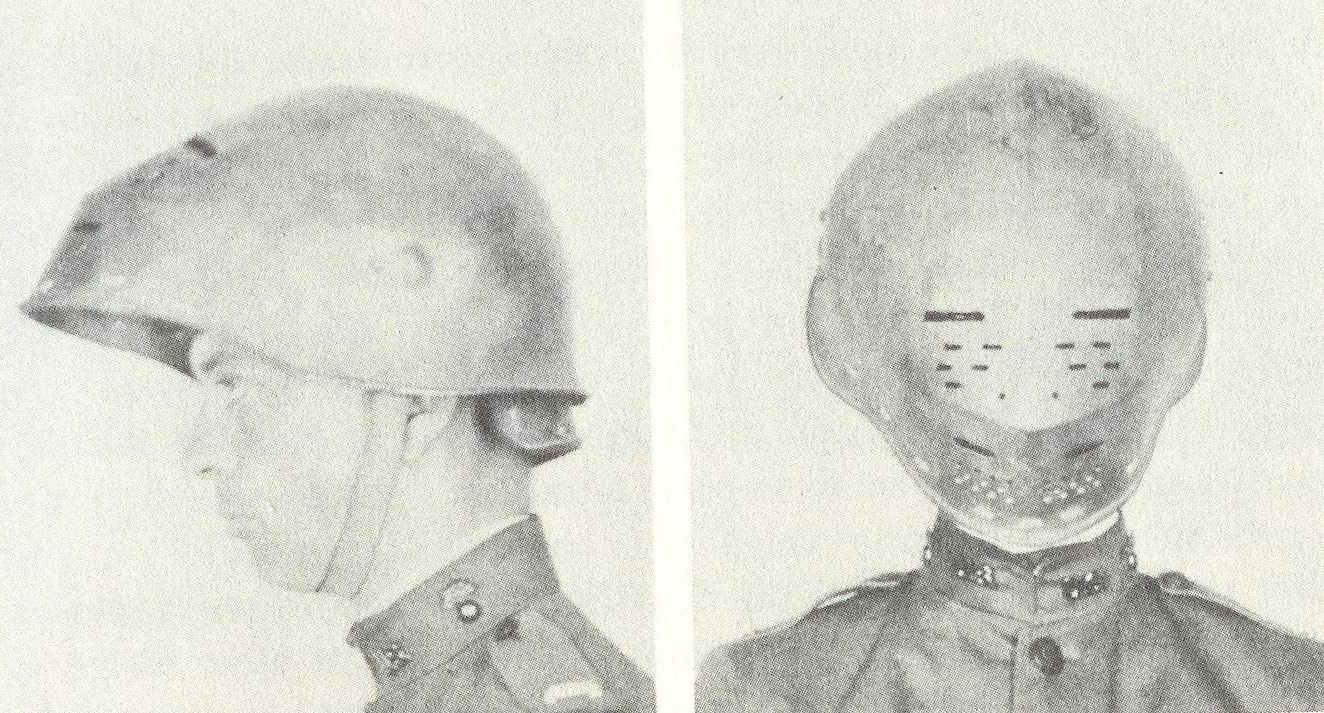
Daniel Tachaux also is credited with designing the Model 6, which featured the novel concept of being able to tilt forward on the wearer’s head, where in the lower position the brim doubled as a facemask. It was less practical than it sounds, and never went beyond the prototype stage. As with the Model 4, the only known example was once displayed at the U.S. Army Ordnance Museum.
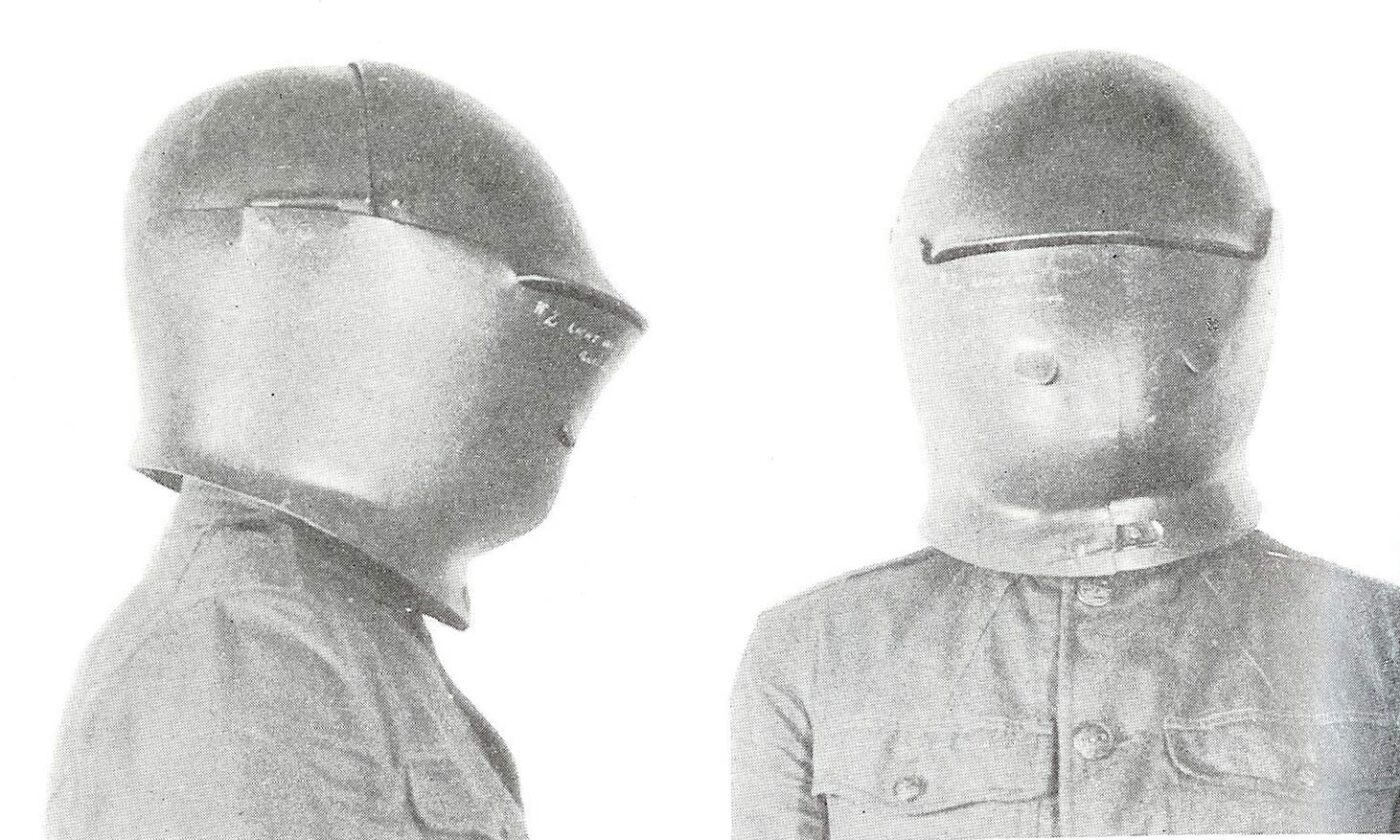
The Model 7 — known as the “Sentinel’s Helmet” — resembled something a medieval knight might have worn. It featured a round dome that protected the top of the head while two flaps closed in on the sides. It was reportedly very uncomfortable. Three versions were produced — weighing 11, 15 and 18 pounds respectively. One of those was known to be in the collection of the U.S. Army Ordnance Museum while a second is in the Imperial War Museum in London. A third example had been owned by the late Robby Wilson of the Wilson Research and History Center, until his untimely passing in 2012. That example was offered for sale for $42,000, and is now in a private collection.
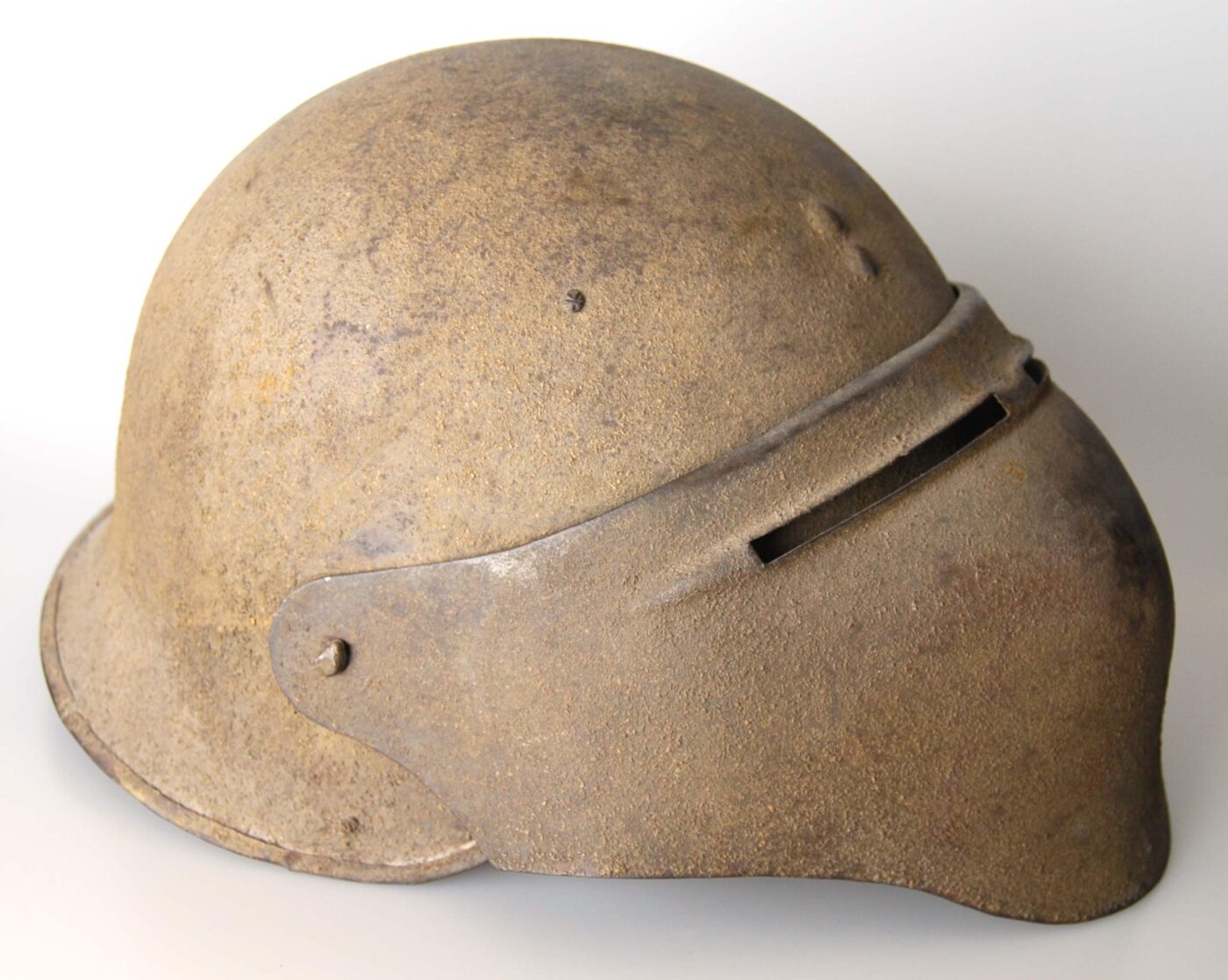
One of the more notable experimental helmets designed during the war was the Model 8. The helmet featured the basic shape of the Model 5 but featured a visor that was meant to protect the wearer’s face while eye slits provided a reasonable field of view. Some 1,300 helmets were produced by the Ford Motor Company, and despite the appearance in the game, none were actually field-tested as production only began after the armistice was signed on November 11, 1918.
The Model 8 has been a favored helmet of collectors due to its unique design. In fact, modern helmets like the Adept Armor Novasteel could be said to take inspiration from the Model 8 design.
As the war was essentially won, the subsequent designs didn’t progress very far. That included the Model 9, which exists only in photos, though the Model 10 was another “full bowl” design that may have been another one-off. Other models, including the Model 11 and 12, likely never progressed past the drawing board, while the Model 13 was reportedly designed as the first prototype tanker helmet, and the Model 14 and Model 15 were designed as flight helmets.
The First American Steel Helmet: The Liberty Bell
One “experimental” that did get a little more attention was a helmet that has earned the name “The Liberty Bell.” There has been speculation that this could have been the Model 1, but no evidence has been found to confirm that fact. The name likely came from the helmet’s unique shape, which loosely resembles an off-center bell.
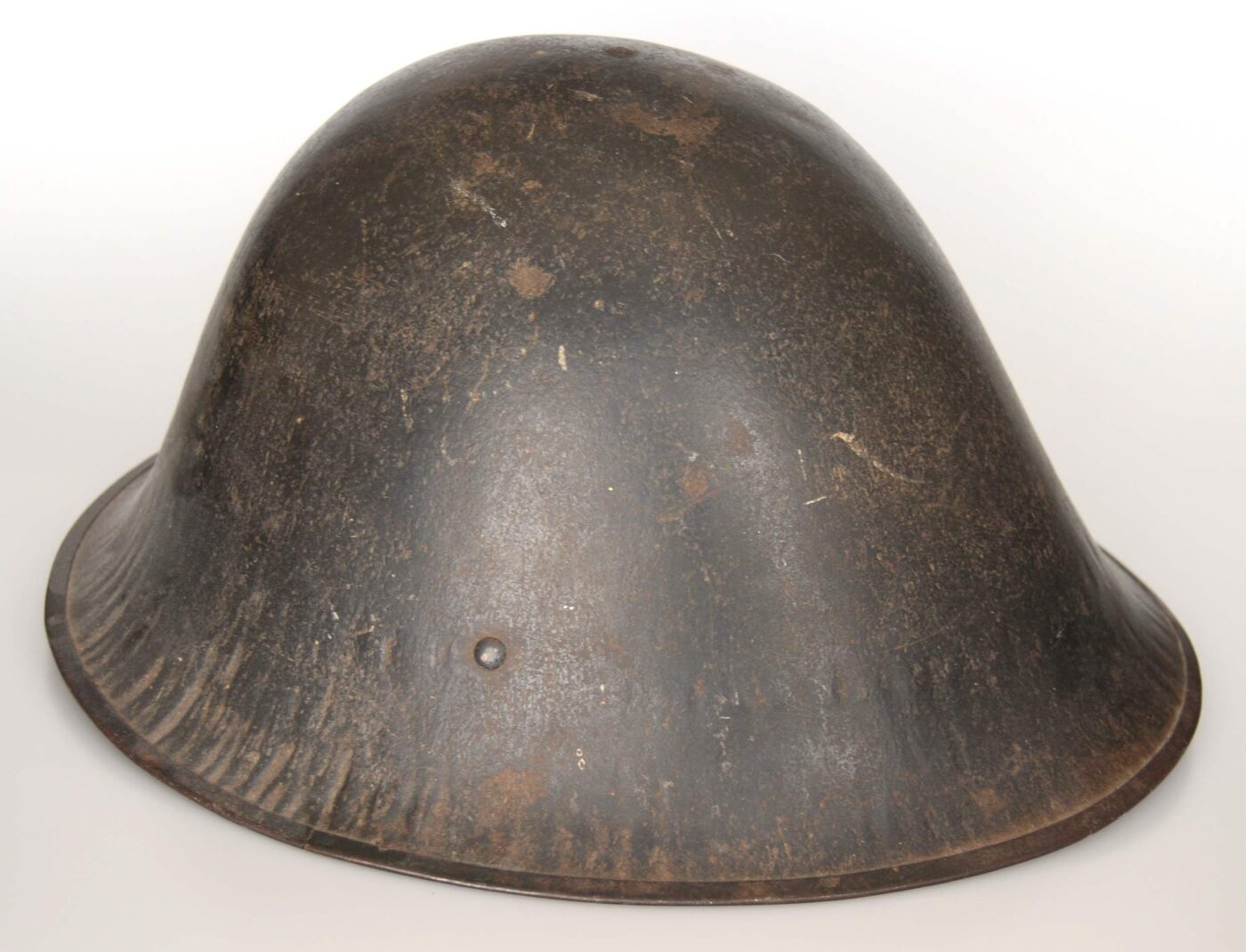
Moreover, a Stars and Stripes article dated from November of 1918 had reported that a handful of models of the helmet had been stamped with an impression of the Liberty Bell on the front. For a long time this was believed to be an embellishment, but an extremely rare example of the helmet model was acquired by advanced American helmet collector Paul Reijnders in the fall of 2012. It has been speculated it was a lone prototype that was referenced in the article.
What is well-known about the Liberty Bell is that it had nothing to do with Dr. Dean. Instead, it was designed by Major James E. McNary and submitted to the American Helmet Committee for consideration as a replacement for the Model 1917 helmet. As the story, initially told by Dean, suggested, the Liberty Bell was accepted by the Army, but was disliked by the troops, who compared it to a dome-like hat of a Chinese fisherman. The helmet was officially abandoned as a replacement helmet in 1920.
There are some flaws in the story of course. When in the history of any military have the likes or dislikes of soldiers really mattered? The more likely answer is that the helmet was field-tested and the war ended before it was widely adopted.
It should be added that Dean was responsible for a number of tall tales. Those include the often-told and now-debunked story that the French General Louis Auguste Adrian had met a young French soldier in the hospital who had survived a shell blast because he wore his soup bowl under his kepi, and that convinced the general to develop the Model 1915 “Adrian” helmet. As with Dean’s other embellishments, it is ridiculous — possibly a misunderstanding on Dean’s part. The French didn’t issue soup bowls; rather, skull caps were issued and those proved to be so uncomfortable that some may have simply used them as mess bowls instead. Dean, who studied and collected helmets, should have known that military planners had known the benefits of steel helmets. Moreover, the French cavalry was wearing helmets when the war broke out.
Sticking with the British Design
In the end, the experimental helmet program didn’t result in the adoption of a new helmet. The U.S. soldiers and Marines wore the Model 1917. It was updated in the 1930’s with an improved liner system as the Model 1917A1. Known as the “Kelly” helmet, it was still in use when the United States entered the Second World War. U.S. Marines wore that pattern while defending Wake Island, and it was still in limited use in the early stages of the war in the Pacific.
Today, the experimental helmets are an interesting side note of what could have been, and show the great efforts that went into producing a better brain bucket. These helmets have also become quite popular with collectors as so few were produced.
Editor’s Note: Please be sure to check out The Armory Life Forum, where you can comment about our daily articles, as well as just talk guns and gear. Click the “Go To Forum Thread” link below to jump in and discuss this article and much more!
Join the Discussion
Continue Reading
Did you enjoy this article?

 194
194






